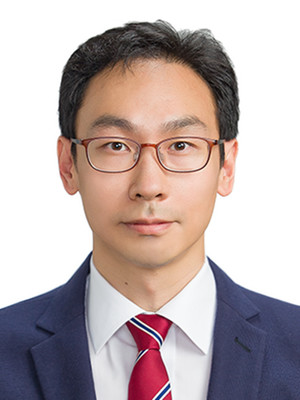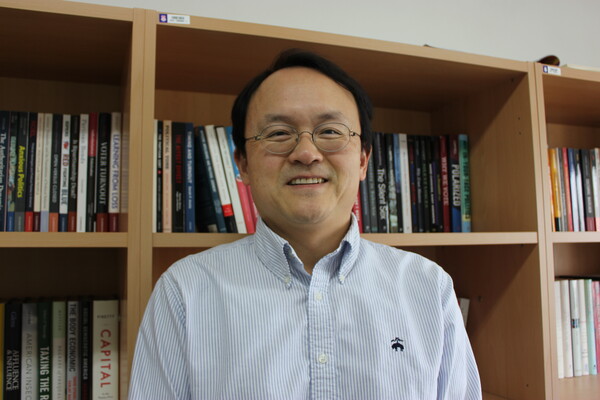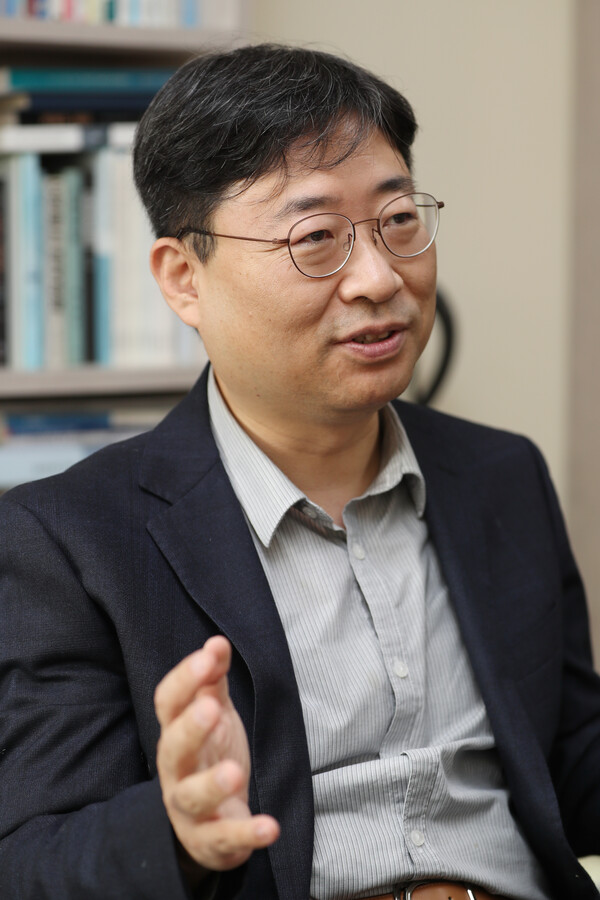There is No Average Brain
Is there any average in the way our brain functions? Neuroscientist Michael Miller at the University of California experimented on language memory in 2002. Sixteen participants were shown a series of words, given recess, then shown another array of words. The participants pressed a button whenever words seemed familiar. During this activity, a digital map of each participants’ brain activity was created, and Miller calculated the average to produce a final brain map. When seen in comparison, only two participants’ maps lined up with the average. In contrast, most brain maps differed significantly from Miller’s average representation. This led Miller to an important hypothesis: there is no “average brain.”

The average brain is a metric that neuroscientists often follow to produce reports and samples based on experimental averages. Miller’s experiments proved that there is a fatal error in this metric. The same can be applied in the Korean society. The average, once recalled as the best account for a group, has lost its significance. Experiencing both diversification and advancement, our society faces increasingly deep and intense polarization. The average Korean brain, or even the very concept of the average itself, is slowly fading away just like Miller suggested.
Average and Normal Distribution
An average is used to summarize data of many individuals into a single value. It is common in our daily lives and often revolves around the indispensable concept of “normal distribution.” Normal distribution refers to a graph in which the data distribution forms a bell shape centering the average data. The further away data is from the average, the less common it is. Thus, in a normal distribution, the average represents a “majority” in number. Unfortunately, this kind of explanation is no longer suitable for modern society. On the other hand, polarization, which means that the data is pushed to two extremes, is progressively becoming more applicable to almost every field, including economy, politics, and culture. Then, what lies behind this growing polarization in Korea?
Polarized Korea: Its Background
Deepening economic divergence plays a key factor in explaining Korea’s continuing social polarization. Recently, the base interest rate in South Korea has risen to 3.5 percent after being lowered to 0.5 percent in 2021. Due to its rise, some people are receiving more interest while others are facing an increase in liabilities.

Lee Sang-bin, a former professor from School of Business at Hanyang University (HYU) explained the relationship between economics and polarization. “When polarization is severe, it leads to reduced economic dynamism and undermines social cohesion, resulting in sluggish economic growth. Conversely, when economic growth declines, employment and income decrease, which leads to an expansion of polarization. During the recent pandemic, social distancing measures caused a slowdown in domestic consumption, significantly impacting service industries with self-employment systems. In other words, domestic demand, particularly in the service sector, was more adversely affected than exports or manufacturing, exacerbating polarization. Additionally, well-intentioned economic policies, such as income-led growth aimed at benefiting the working class, have inadvertently made their lives more challenging. When the government takes the lead, it tends to create low-quality jobs and heavily rely on temporary employment. Jobs of high quality can only be created when businesses take the lead.”
Social media has also played a pivotal role in polarizing views on various topics, such as politics, economics, gender, and consumption. Social media enables individuals and organizations to communicate about their products and services, share real-time information, and create awareness of specific issues. However, it is also full of misleading contents along with cyber risks, such as “confirmation bias.”
Confirmation bias, also known as “echo chambers,” refers to situations in which users only consume and engage in contents that predominantly support the same points of view that they themselves hold. Social media induces polarization making echo chambers in terms of selecting, filtering, and sorting information on social media. Participants are not only influenced by their professional and personal experiences but also by the information circulated toward them through social media algorithms. Over a reasonable period of time, users tend to favor certain social media platforms due to their familiarity with the source rather than trustworthiness, seeking biased information from like-minded individuals.
Politics: Affective Polarization
Common phenomena associated with polarization include politics, opinions, income, and consumption. Political polarization is deepening on a worldwide scale and can also be observed in Korea. According to the Korea Institute of Public Administration, the overall ideological polarization in Korea is unclear, but affective polarization toward the two major political parties has increased since the mid-1990s. Ideological and affective polarization are different. The former refers to the division in political ideology, and the latter means the deterioration in two different political groups’ emotions toward each other. Ideological polarization can easily lead to affective polarization. Hence, political polarization is likely to cause social conflict.

Hahm Hyeon-ho, a professor from the Department of Policy at HYU, argued that voters who are politically antipathetic to the opposite group can also be hostile to counterparts in non-political fields. He said, “Basically, if conflicts within social groups continue, trust and supportive attitude toward the government, policies, and political processes will become significantly problematic. Policy proposals or legislative activities to resolve social conflicts will be deadlocked. Also, political emotion can affect non-political areas, such as relationships with others. For example, on online dating sites, people can feel hostility if they are connected with those whose political preferences are different from them.”
Society: Opinion Polarization and Conflicts
Although the development of the Internet has played a great role in expanding the exchange of opinions, it has also brought about negative aspects, such as the aforementioned echo chambers. Thus, the existing beliefs of people are strengthened by the new closed systems of news media.

Ha Shang-eung, a professor from the Department of Political Science at Sogang University, points out the negative aspects of sharing opinions through online platforms. He said, “Sharing information that is biased or unreliable to the public can be problematic. These online platforms not only exaggerate this problem but also make it difficult to recognize. For example, let’s say that a ‘Party I’ has acted problematically on an issue. Even if Party I acknowledges their faults, the opposite party’s fierce online criticism can lead to a defense mechanism of Party I to support their incorrect actions.” He also mentioned the link between political polarization and opinion polarization. “No one agrees exactly with another. Over the top 100 outstanding issues, one can take a progressive stand on a specific issue and a conservative stand on another. For example, centrist progressive voters can be closer to centrist conservative voters in the normal distribution, but they may be more likely to see highly progressive voters on their side due to confirmation bias through the Internet. As a result, public opinion on politics polarizes.”
Economy: Income Polarization
The third aspect of polarization is income polarization, which refers to the phenomenon in which income distribution becomes concentrated on both ends as the middle-income class shrinks.

Ha Joon-kyung, a professor from the Department of Applied Economics at HYU Erica Campus, pointed out how income polarization can affect our society. “First, people in the lower-income group may not have sufficient opportunities. Even if they are intelligent, it may be difficult for them to get a loan from banks to pursue the education or investments they desire. Second, social and political instability could arise. When political instability increases, companies may reduce investments because the future is uncertain. There are also non-economic issues regarding fairness. A commonly-held maxim tells us that money makes money faster than labor, thus those who inherit wealth are at a greater advantage than others. If people become dissatisfied with this reality, it could hinder the development of capitalism.”
The Market: Consumption Polarization
The consumption lifestyle of the generation MZ is completely different from those who came before them. This new consumption strategy can be called the “Janus strategy.” Janus, the guardian god of gates in Roman mythology, has two faces. Similarly, the generation MZ’s luxury consumption has a dual nature of “cost-effectiveness” and “flex.” Cost-effectiveness refers to the satisfaction obtained by comparing the price one paid with the performance of the product. On the other hand, flex is a term commonly used among the youth and refers to spending a considerable portion of their money on high-priced products in order to show off.
The market is becoming polarized, with consumers opting for either extremely expensive or cheap products, leading to the disappearance of the so-called middle ground in the market. Some consumers are participating in a no-spend challenge, where they certify on social media that they have not spent any money for a day. There has also been an increase in the number of office workers who pack their own lunches to save money.
On the other hand, the sales of luxury and high-priced items have skyrocketed. According to the market research firm, Euromonitor, the domestic luxury market grew so rapidly last year that it ranked seventh in the world. The proportion of purchases of luxury goods by people in their 20s and 30s was 45.4 percent at Lotte Department Store, 50.5 percent at Shinsegae Department Store, and 48.7 percent at Hyundai Department Store.

Suh Young-gu, a professor from the Department of Economics at Sookmyung Women’s University, explains why Korean youth are seeking and purchasing such expensive products, especially after the pandemic. “Since 2020, our country has experienced economic growth of about four percent, resulting in an increase in individual incomes. However, due to the inability to travel abroad compared to the income growth, people engaged in “revenge consumption” and started to buy luxurious goods as a substitute for overseas travel. Recently, the generation MZ has started to account for over 50 percent of the entire luxury market. With cryptocurrencies, stocks, and other similar investments offering young people the possibility of earning a great deal of money very early, they have naturally become more interested in luxury goods. Most importantly, the generation MZ is more educated than those who came before them, and individuals who have attended university have higher awareness and preference for brands and luxurious goods.”
At the same time, the strengthening of delivery and takeout services during the pandemic, as well as the long-term economic downturn and high inflation, have led to an increase in consumers seeking low-cost brands. This led to growth in the low-cost brand market. The low-cost coffee market has emerged as the mainstream player in the coffee industry. According to the market analysis big data service provider WiseApp, published in November 2022, the proportion of low-cost coffee franchise payment amounts in the domestic coffee market has continued to increase by approximately three percent annually over the past four years.
Antagonism Towards Polarization
Those who focus on the negative aspects of polarization make the following arguments. The first is a focus on the conflict between social groups. As the gap between income, opinion, and political groups grows, a cliquish mood in society can spread. In Korea, where the orientation for a single-race nation is strong, this atmosphere is expressed as an aversion to immigrants and foreigners. People with a high degree of party-based “in-group favoritism” have a relatively exclusive national identity due to polarization. Secondly, there is a risk of national imbalances. This highlights the problems created by a concentration of power in a place with absolute advantage due to polarization. As the gap between the metropolitan area and the non-metropolitan area grows, Korea is gradually changing to a uni-pole system. According to the National Statistical Office, 50.3 percent of the population, 55.0 percent of the young population, 50.5 percent of the jobs, and 86.9 percent of the enterprises are concentrated in the metropolitan area, which occupies only 12 percent of the national land.

Kweon Ihl, a professor from the Department of Urban and Transportation Engineering at Korea National University of Transportation, said, “The national imbalance is a problem that must be solved in terms of fairness. Korea’s infrastructure supply plan is concentrated on the metropolitan area because public goods’ distribution is focused on efficiently and profitably. However, this is a serious violation of fairness, as non-metropolitan people should also get tax benefits fairly.”
What comes next?
Polarization can no longer be ignored. So how should we deal with it? Professor Ha Shang-eung suggests “contact theory” to eliminate the emotional gap between groups. He said, “Contact theory has emerged in social psychology as a means to prevent in-group favoritism and xenophobia that has intensified due to polarization. With a few conditions met, the interaction between citizens and foreigners can increase. First, the income level of foreigners interacting with each other should be similar to that of citizens. Second, the members of both sides should be in contact with each other since childhood. Third, the contact must be continuous.” Professor Hahm said considerable attention is needed when discussing policies related to contact theory. He also added, “If the conditions are weak, side effects can occur. It is necessary to prepare more than simple contacts, such as an organization to increase trust and favor with other groups.” The imbalance in the country is related to policies to reduce unemployment in the metropolitan area. Professor Kweon said, “If the unemployment rate decreases due to the unemployment reduction policy in the metropolitan area, the population will be concentrated in Seoul with high-income expectations for guaranteed jobs.” Therefore, to better distribute expected incomes, the domestic imbalance related to employment policies must be resolved.
Professor Lee, therefore, argues “In a market economy that values individual creativity and autonomy, it is businesses, not the government, that create wealth. The government, however, should strive to establish systems that allow for education aligned with technological advancements. It is the responsibility of the government to develop and implement policies that incentivize companies to promote employment through education and training. The main culprit behind the deterioration of public education at present is the Ministry of Education. This serves as an example of how uniform government regulations can be detrimental to an education system that requires diversity.”


